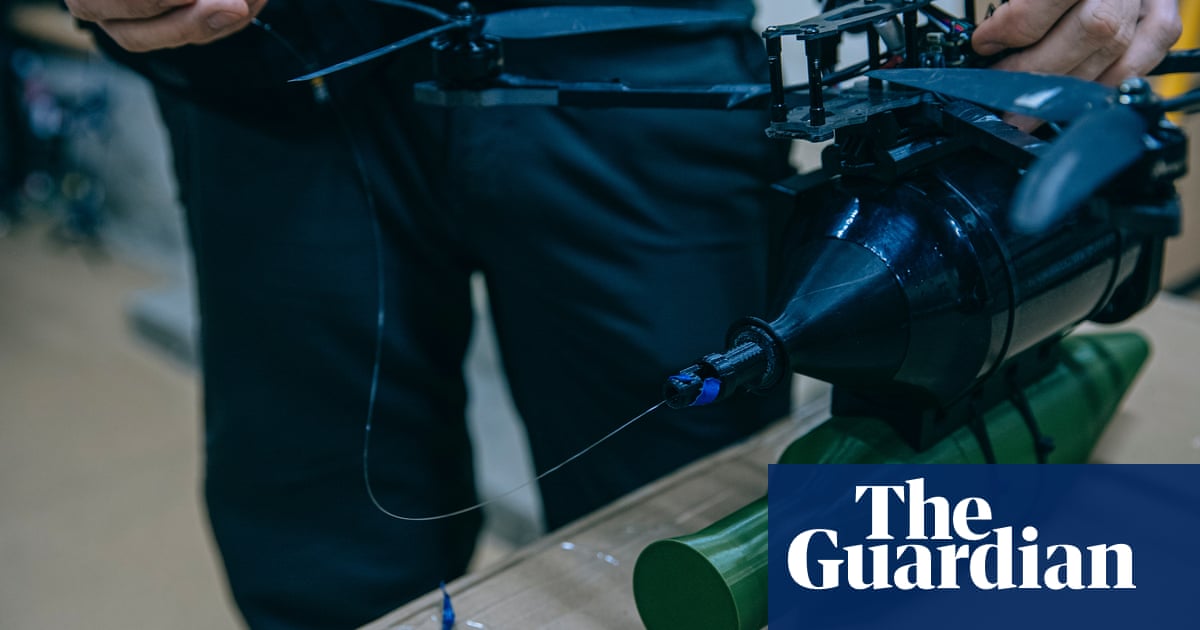At a secret workshop in Ukraine’s north-east, where about 20 people assemble hundreds of FPV (first person view) drones, there is a new design. Under the frame of the familiar quadcopter is a cylinder, the size of a forearm. Coiled up inside is fibre optic cable, 10km (6 miles) or even 20km long, to create a wired kamikaze drone.
Capt Yuriy Fedorenko, the commander of a specialist drone unit, the Achilles regiment, says fibre optic drones were an experimental response to battlefield jamming and rapidly took off late last year. With no radio connection, they cannot be jammed, are difficult to detect and able to fly in ways conventional FPV drones cannot.
“If pilots are experienced, they can fly these drones very low and between the trees in a forest or tree line. If you are flying with a regular drone, the trees block the signal unless you have a re-transmitter close,” he observes. Where tree lined supply roads were thought safer, fibre optic drones have been able to get through.



Ok, but then how strong can such a filament be? Seems like anything and everything could potentially severe the connection
Since the filament is not under tension as it is unwinding I think unless someone intentionally cuts it or it jams somehow it should not jus break.